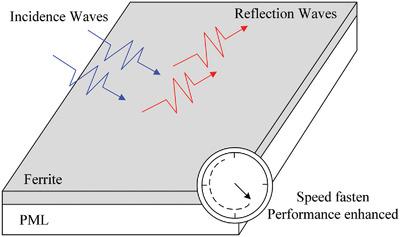当前位置:
X-MOL 学术
›
Adv. Theory Simul.
›
论文详情
Our official English website, www.x-mol.net, welcomes your
feedback! (Note: you will need to create a separate account there.)
Higher‐Order Approximate CN‐PML Theory for Magnetized Ferrite Simulations
Advanced Theory and Simulations ( IF 2.9 ) Pub Date : 2020-02-20 , DOI: 10.1002/adts.201900221 Peiyu Wu 1 , Yongjun Xie 1 , Haolin Jiang 2, 3 , Liqiang Niu 1
Advanced Theory and Simulations ( IF 2.9 ) Pub Date : 2020-02-20 , DOI: 10.1002/adts.201900221 Peiyu Wu 1 , Yongjun Xie 1 , Haolin Jiang 2, 3 , Liqiang Niu 1
Affiliation

|
Two unconditionally stable implementations of the higher‐order perfectly matched layer are proposed for the modeling of magnetized ferrite in the finite‐difference time‐domain lattice. By incorporating the approximate Crank–Nicolson (CN) algorithm and the modified auxiliary differential equation (ADE) approach, the proposed implementations take full advantage of the CN methods in terms of reducing the computational time and improving the computational efficiency. Approximate CN algorithms including the Crank–Nicolson–Douglas–Gunn and the Crank–Nicolson Approximate‐Decoupling schemes are implemented in 2D simulation. Furthermore, based on the ADE method, an alternative method at the integer time step is proposed to analyze the anisotropic magnetized ferrite structures. Its computational efficiency can be further enhanced compared to the shift operator method from the previous works. A full‐filled ferrite model and a ridge waveguide structure are introduced to illustrate the effectiveness and efficiency of the proposed algorithms. The results show that the proposed algorithms can improve the computational efficiency, overcome the Courant–Friedrich–Levy limit, and obtain considerable absorbing performance.
中文翻译:

磁化铁氧体模拟的高阶近似CN-PML理论
为有限差分时域晶格中的磁化铁氧体建模,提出了两种高阶完美匹配层的无条件稳定实现。通过结合近似的Crank-Nicolson(CN)算法和改进的辅助微分方程(ADE)方法,提出的实现在减少计算时间和提高计算效率方面充分利用了CN方法。近似CN算法包括Crank–Nicolson–Douglas–Gunn和Crank–Nicolson近似解耦方案,是在2D模拟中实现的。此外,基于ADE方法,提出了一种整数时间步长的替代方法来分析各向异性磁化铁氧体结构。与先前工作中的移位算子方法相比,它的计算效率可以进一步提高。介绍了一个充满铁氧体模型和一个脊形波导结构,以说明所提出算法的有效性和效率。结果表明,所提出的算法可以提高计算效率,克服Courant-Friedrich-Levy的限制,并获得可观的吸收性能。
更新日期:2020-03-04
中文翻译:

磁化铁氧体模拟的高阶近似CN-PML理论
为有限差分时域晶格中的磁化铁氧体建模,提出了两种高阶完美匹配层的无条件稳定实现。通过结合近似的Crank-Nicolson(CN)算法和改进的辅助微分方程(ADE)方法,提出的实现在减少计算时间和提高计算效率方面充分利用了CN方法。近似CN算法包括Crank–Nicolson–Douglas–Gunn和Crank–Nicolson近似解耦方案,是在2D模拟中实现的。此外,基于ADE方法,提出了一种整数时间步长的替代方法来分析各向异性磁化铁氧体结构。与先前工作中的移位算子方法相比,它的计算效率可以进一步提高。介绍了一个充满铁氧体模型和一个脊形波导结构,以说明所提出算法的有效性和效率。结果表明,所提出的算法可以提高计算效率,克服Courant-Friedrich-Levy的限制,并获得可观的吸收性能。











































 京公网安备 11010802027423号
京公网安备 11010802027423号